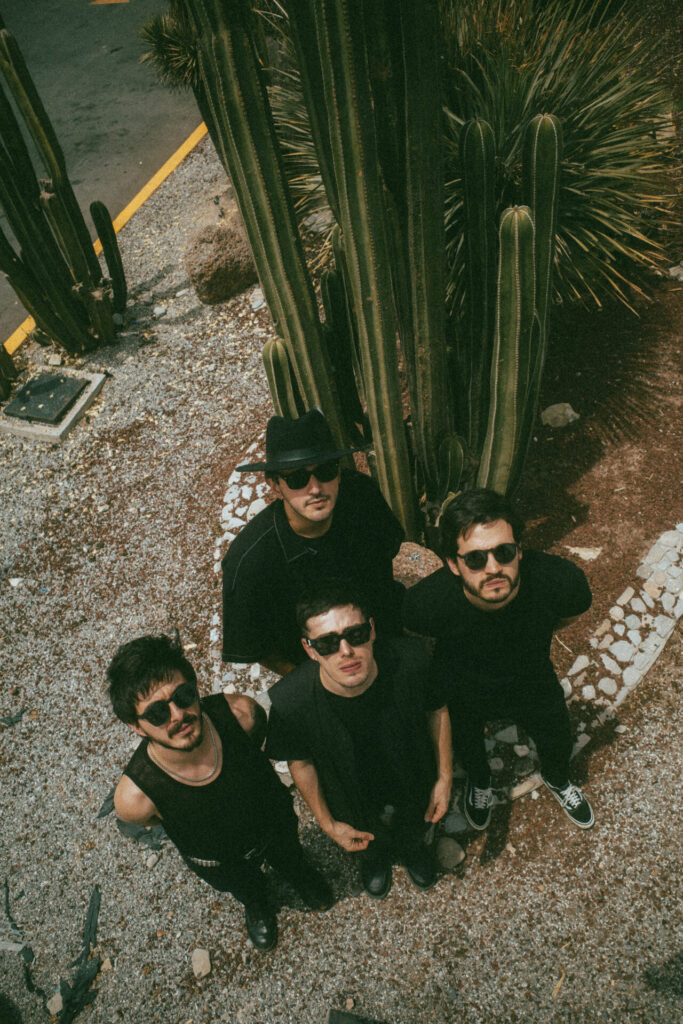¡Nuestra conversación con Morat fue traducida del español, puedes leer esta entrevista en español aquí!
In early February of this year, Morat brought their highly anticipated “Si Ayer Fuera Hoy” tour to the city of Boston. The Colombian band, composed by Juan Pablo Isaza, Martín Vargas, Simón Vargas and Juan Pablo Villamil, delivered an electrifying performance at Big Night Live, captivating a crowd of approximately 1500 enthusiastic fans. With a set list of 22 songs, Morat showcased their signature blend of pop music infused with elements of folk, rock, and alternative genres. The band’s remarkable reception in Boston prompted Front of House Boston to sit down with them for a conversation about their latest album, “Si Ayer Fuera Hoy,” their experience touring in the United States, and their ongoing global tour.
Throughout their career, Morat has captivated audiences worldwide with their music, commanding big stadiums filled with thousands of fans. The energy and power emanating from their show at Big Night Live back in February of this year surpassed the venue’s capacity, it became unmistakably clear that the “Si Ayer Fuera Hoy” show was destined for larger venues. Despite their devoted Latin American fanbase, Morat embraced the opportunity to present a more intimate version of their show in the United States. This experience revealed beauty and nuance, allowing the band to forge a special connection with American audiences. In taking this leap, it gave them the chance to explore a whole new touring experience, something different from what they are accustomed to.
Martín: “We really loved it (The tour in the United States). We have already done three tours in the United States, and the first one was like checking off a dream. It’s really cool because it’s a tour that has always been on a smaller scale. In the United States, we’re also taking it slowly, building our path. The concerts are smaller; we’ve been in groups of twelve and twenty on the last one, traveling on two buses. It’s a tour where you spend a lot more time with the team. Surprisingly, it has certain conveniences. It’s one of the few tours where your resting place and workspace are always just twenty or forty meters away, meaning you have your bed right there” … “It truly is a tour that we enjoy a lot. Obviously, after spending a long month together with about twenty people on a bus, you start to crave your own space. But I believe that’s also part of the magic that the American tour holds.”


Their latest album, “Si Ayer Fuera Hoy,” made its highly anticipated debut in November of last year and swiftly climbed the charts. As a personal challenge, the group took a nostalgic approach and recorded the album on tape. This deliberate choice not only pays homage to the album’s title but also serves as a heartfelt tribute to the bands that have been around for a longer period of time and have inspired Morat’s unique sound and have shaped their musical journey.
Isaza: “The concept, I think, arises from what we wanted to achieve in terms of technical aspects when recording the album. Our previous albums were recorded in our homes, studios, and on a computer, right? We used Pro Tools and everything was digital. The mentality one often has when recording with today’s technology is that you can repeat it as many times as you want and there’s no problem. You can even fix it once you’ve done it. So, we wanted to face the challenge of what would happen if we removed those aids and imposed limitations that force us to be creative in a different way. That’s why we recorded the album on tape, as if “Si Ayer Fuera Hoy” was a bit like yesterday. So, the songs feel like current compositions with a contemporary mindset, the way we would make music today, but the recording process was like how it was done in the past. The tape runs out too, and it’s expensive, you have to play it well because otherwise you have to make cuts, and that can become a hassle.”
Simón: “I also believe that, coming from that same perspective, it has a very literal aspect to it, which I feel represents the executive side. There’s also the other side, the idea of classic bands, the bands that were prevalent in the past, and perhaps in the Spanish language, the format has been less utilized. At least on the radio, what we hear are many duets and solo artists. So, it was kind of wanting to revive the concept of classic bands, the timeless and classic essence, and trying to bring forth that heritage. That was also a very significant part of the discussion.


On this album, Morat took their artistic journey to new heights by embracing collaborations with urban artists Feid and Duki. This bold move not only added a fresh and exciting element to their music but also served as a valuable learning experience for the band. The unexpected and thrilling results of these collaborations brought a sense of surprise and innovation to the album, reflecting Morat’s ongoing evolution and exploration. This artistic exploration will undoubtedly shape their future projects, promising even more exciting and groundbreaking musical ventures.
Isaza: “We believed it was a good idea to slightly discomfort the people who had been listening to us. It’s like I felt that up until that point, we had been very predictable, very accommodating. We loved the music we had made, but I think we were becoming too reliable, like “we know these guys are going to release something in this style and we’re going to like it,” I mean, the fans. And we believe that doing that opened a door that we’re still considering, to approach that exercise in a different way. I interpret it as a very conscious decision to evolve and take risks. And I think it served us a lot in knowing what to repeat, what not to do, and realizing that the ceiling of what we could achieve was much higher.”
Villamil: “Above all, because we are also fans of them, especially of Feid. Among all the urban artists, I think Feid is one of the artists we like the most, and we have said it for a long time. It was a very special alternative for us.”
Isaza: “I believe that we are still very much attached to the idea of the classical and tempo music. I feel that “Si Ayer Fuera Hoy” has amplified our awareness of the differentiating factor we possess as a band, a factor that can be explored to unimaginable levels. We are still uncovering the potential that lies within the legacy of bands from the past, and the impact it has on people’s perception of us. We realize that what we can do is not simply achievable by solo artists because it doesn’t sound the same and cannot be justified in the same way on stage. This, we believe, is our differentiating factor, and we are constantly thinking of ways to embrace it. I would say that we are now somewhat envious of nostalgia, reminiscing about how we felt when we listened to old bands, and how we can evoke a similar sentiment for both our existing and new audiences through our music.”

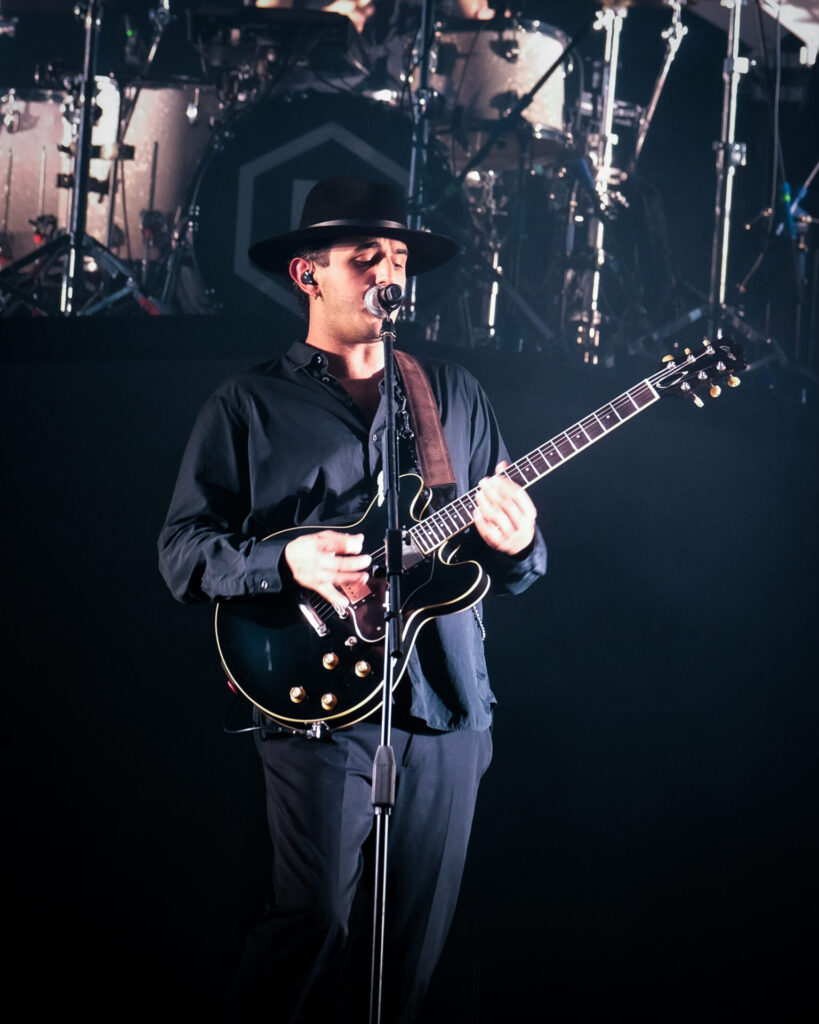
As they evolve in their musical journey, the group strives to create an inclusive show. Every aspect, from the lyrics to technical production decisions, is carefully crafted to invite listeners into the captivating world of “Morat”. They aim to make the audience feel a deep connection to the stories conveyed in their songs and live performances, knowing that these narratives can resonate with their own lives. Moreover, the band takes pride in their commitment to showcasing the significance of live instruments. They passionately maintain the band structure, where each member on stage contributes to the collective sound, creating a fresh and exciting experience every time they step into the spotlight.
Isaza: “We like to conceive our concerts as a space suitable for everyone, literally, for all kinds of people, of any age, of any gender, everyone. We are increasingly concerned with making our concerts as inclusive as possible, and I believe that translates into how the stage is designed, the type of music we make, and our songs themselves. We all sing the choruses together, and we see that as an implicit invitation for people to do the same. We have sections, now I’m getting a bit more technical, where parts of our songs are designed to be more sing-along friendly, specifically to encourage people to join in during the concert. So, I think one way to describe it is that it’s a very inclusive concert, and it’s becoming even more so.”
Villamil: “I also believe that besides being inclusive, it is a different alternative to the majority of commercially popular music that is currently playing. And I think that is also very important to us. The instruments which are part of that mix, are what truly define Morat one hundred percent.”
Simón: “I believe that one of the first things for me is that we are a band, we sound different both live and in recordings compared to, what Villa is saying, most songs that are popular on Spanish radio. I feel that there aren’t many bands in Spanish.”

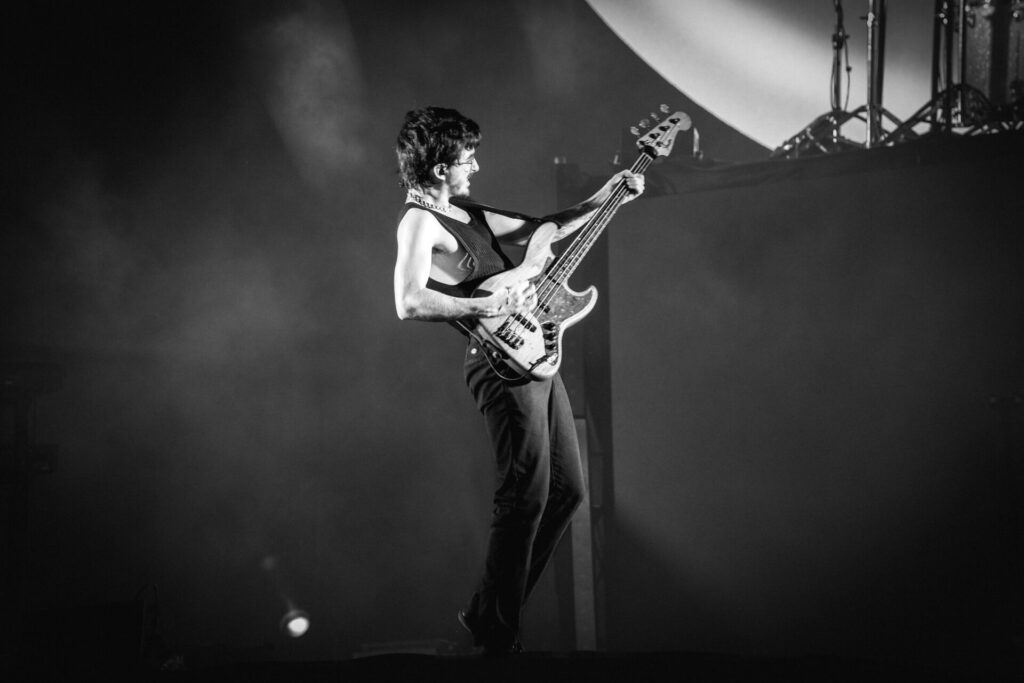
Morat goes above and beyond in ensuring that every aspect of their show complements the energy of their music. They pour careful thought into every detail, from the heartfelt speeches that precede their songs to the captivating lighting and overall production. It’s all part of a meticulously crafted choreography aimed at stirring emotions within the audience. The inclusion of awe-inspiring elements like the Kabuki drop, a dramatic curtain reveal, and sensational pyrotechnics adds an extra layer of excitement to their already breathtaking stage performance. Morat’s dedication to delivering a truly unforgettable experience shines through in their attention to detail, making their live shows a feast for the senses.
Simón: “We are very meticulous with everything that is happening. We are incredibly lucky to have a hardworking team, including an exceptional lighting designer. We feel that every element adds a little something, you can deliver a beautiful speech, but if you add lighting that enhances the emotions, if you add background music or keyboards that contribute to what you’re seeking, we strive to ensure that everything is synchronized for maximum impact. It’s not just about a specific technique like the Kabuki drop, it’s about it falling at the right time, synchronized with the lights and the beat of the music. It’s more like our choreography on stage with our entire team, it is like magic tricks.”
Villamil: “I won’t give you too many details, but we are planning the next tour and one of the things we are doing is taking what we consider the most important pillars of a perfect show, an ideal show. Among all of us, we have been sharing ideas and recently we have been collecting everyone’s ideas and grouping them according to these different criteria to understand what we have for each pillar of what we consider a perfect show. So many of these things, I would say 90% of them are things that we have thought about very carefully, how to incorporate them, where to include them, and why.”
Martín: “Absolutely, I feel it’s also part of the magic of the show. I mean, for a person, it may seem like they just walked in, enjoyed the experience, and it’s over. But behind the scenes, a lot of things happen. I mean, things that even we often don’t see. We get to the venue at a point where production has advanced a lot, where they set up, lift up the chains, the motors. It’s really beautiful to see, but at the same time, I think it’s magical when people don’t fully grasp it. It often makes the surprise even greater.”
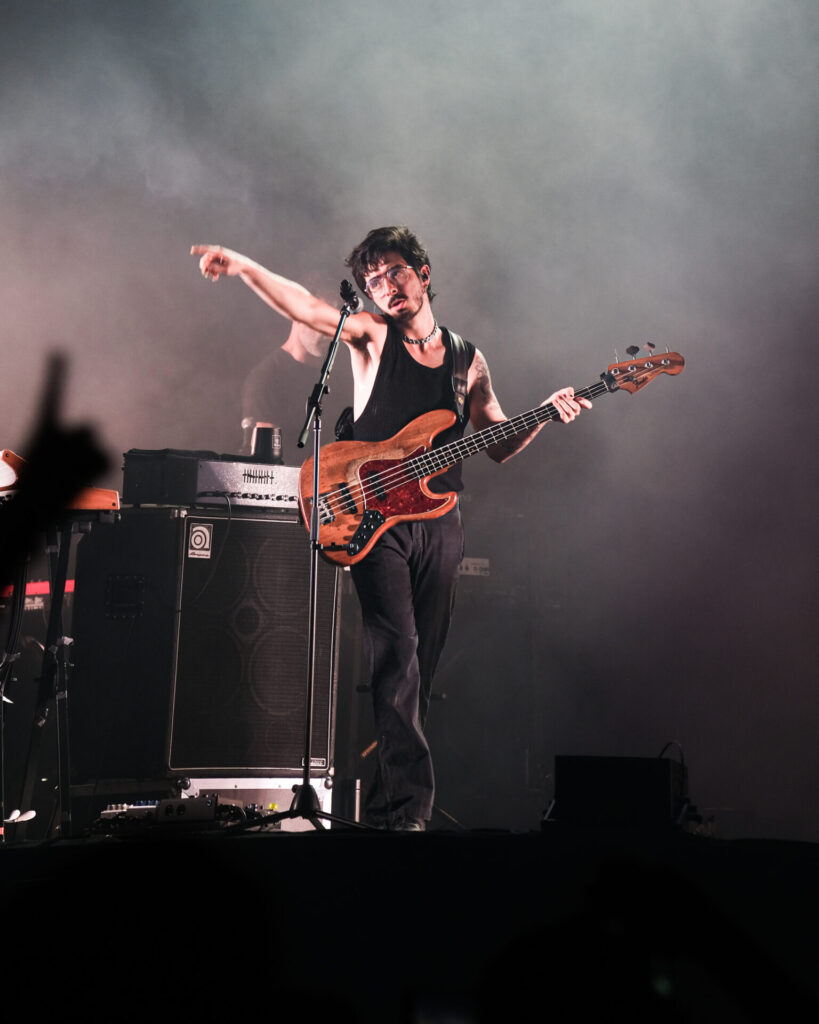
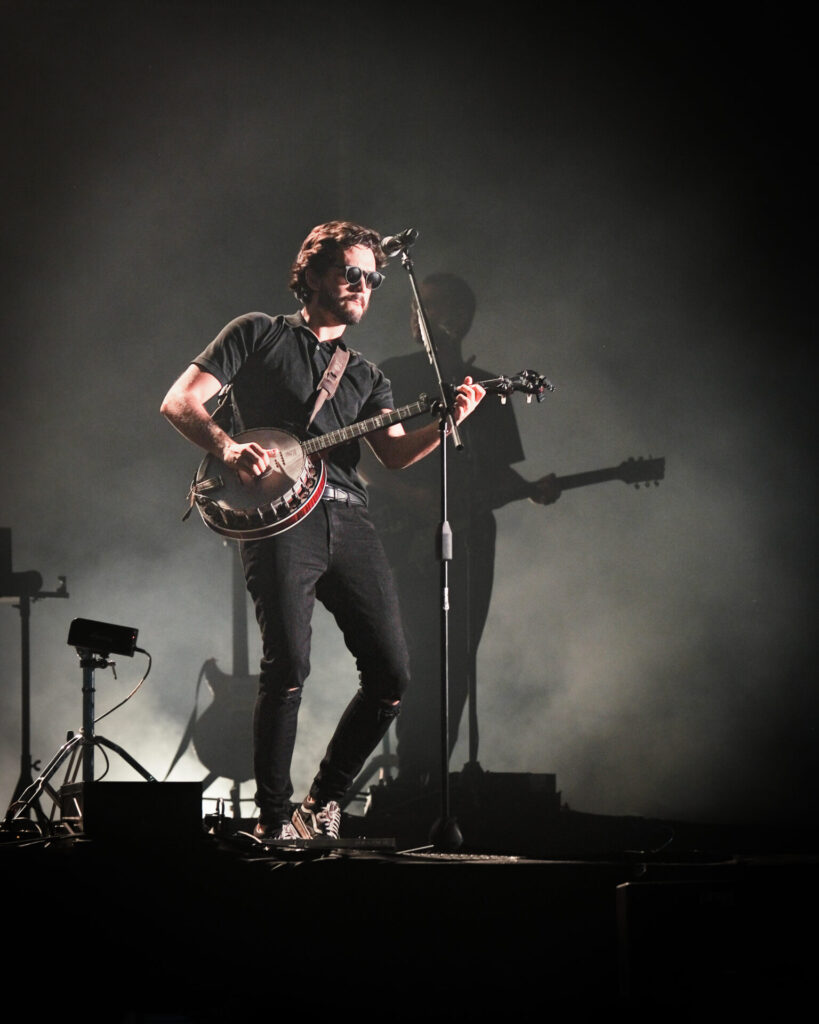
This year, the band has an extensive schedule of approximately fifty shows and counting. Traveling is a significant part of their job, which often means being far away from home. However, the band maintains a positive outlook and knows how to make the most of their time on the road. They view it as an opportunity to immerse themselves in the culture of new places, establish routines that provide a sense of familiarity, and embrace the idea that home is not solely a physical location but rather a feeling.
Isaza: “Honestly, something strange is happening to me, and I think maybe to everyone as well. Which is that we have just moved to a new house, we are in a brand-new home, but I still don’t feel at home in my own home. We have traveled so much that we have slept more outside than inside.”
Martín: “I also think that over time, one finds ways to make every hotel room feel like home.”
Isaza: “With a routine, one already knows where to put the suitcase, how to navigate the steps, I think so, more or less.”
Villamil: “What I do believe is that we are trying to do more, and I think it’s an unspoken goal that we’ve discussed, which is to try to do things to enjoy the tour more, like sometimes going beyond just music, like maybe embracing the fact that you’re not at home but still having a great time while being away.”
Simón: “It’s about thinking a bit about the cool things of traveling, which are getting to know new places, being in a different environment, and getting along with our entire team. Even though we may not feel specifically at home, we do feel like a family. I feel that it’s different, but it still has that comfort of being in a place where one feels comfortable, right? So, I also feel that, because we have been friends for a long time, that sense of family translates. Many times, my feeling is that even though we may be far from home, we are still “at home” in a way.”


The group is filled with anticipation for the remainder of the year. They discuss their upcoming shows with contagious excitement, reflecting on their accomplishments with a deep sense of pride and wonder.
Martín: “This tour has been full of highlights. We’ve experienced very special moments, from the noticeable leap in production and the show itself. We feel that we’ve made significant progress from “A Dónde Vamos,” which was a tour born during the pandemic, to what it is today. And the Mexican tour, I believe, is the best Mexican tour we’ve had since we started. Everything feels very special right now. Canada is up next, and it will be our first time there. We’re also returning to Spain in June for a summer tour, and the second half of the year is also being finalized. Recently, dates were announced for the Southern Cone. So, honestly, we’re doing well. We’re very happy with everything we’ve achieved on this tour.”

As a special gift to their fans, Morat has introduced a captivating concept known as the “Galería Inesperada”, which translates to “Unexpected Gallery”. Within the confines of their arenas, they have created a physical space where they will unveil unreleased material and share untold stories exclusively with a selected group of fans.
Isaza: “You can expect to hear a lot of things that nobody else will hear. We are showcasing music and sharing anecdotes that we have never revealed before, along with songs that have never been heard. Taking into account the feedback from those who have already attended, people are extremely excited, especially because we are revealing songs that will be released in the future.”
Morat has achieved chart-topping success, collaborated with renowned artists, delivered unforgettable live performances, garnered recognition and awards, and cultivated a passionate fan base. Their innovative music and unwavering commitment to excellence make them a force to be reckoned with in the music scene.
As for their upcoming music, Morat tantalizingly hinted at new releases without giving too much away. Whether you’re drawn to contemporary pop, alternative sounds, or seeking solace from heartbreak, Morat’s music will undoubtedly strike a chord with you. Their infectious melodies and poignant lyrics have the power to uplift and heal. We eagerly anticipate Morat’s upcoming projects, and we hope for a quick return to the city of Boston.
Isaza: “We will definitely release new music, but we can’t tell you how we’re going to do it. However, we have something very special planned, and if it goes well…”
Martín: “If it goes well, “chef’s kiss.”
CATCH MORAT ON TOUR HERE!
LISTEN TO MORAT HERE:



